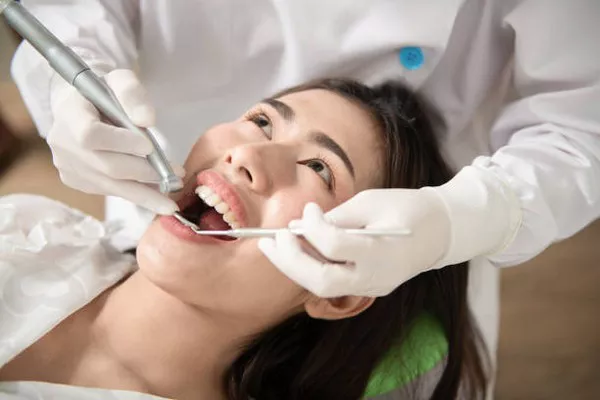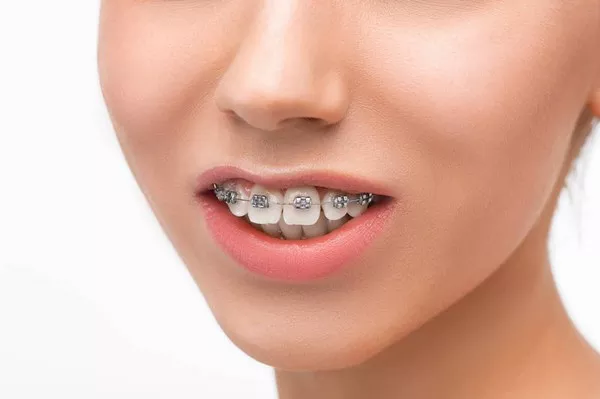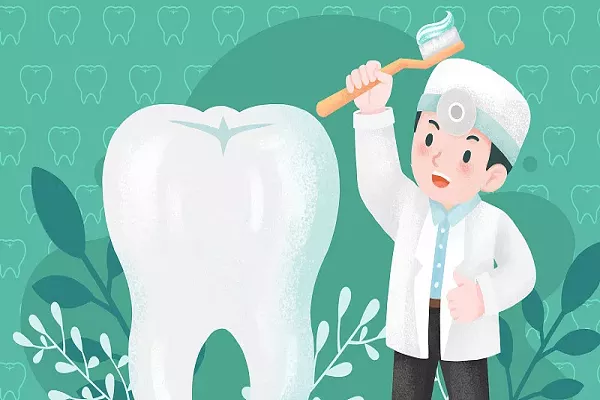Gum disease, also known as periodontal disease, is a common oral health issue that affects millions of people worldwide. It is characterized by inflammation and infection of the gums, which can lead to serious complications if left untreated. Symptoms of gum disease include red, swollen, and bleeding gums, persistent bad breath, receding gum line, and loose teeth. Proper oral care, including regular brushing, flossing, and the use of mouth rinse, is crucial for preventing and managing gum disease.
Types of Mouthwash
When it comes to choosing a mouth rinse for gum disease, there are several options available on the market. These include antimicrobial mouthwashes, alcohol-free mouthwashes, and natural options.
Antimicrobial Mouthwashes: These mouthwashes contain ingredients such as chlorhexidine and cetylpyridinium chloride, which are effective at killing bacteria that cause gum disease. Antimicrobial mouthwashes can help reduce plaque buildup and inflammation in the gums, promoting overall gum health. However, they may cause temporary staining of the teeth and alter taste perception for some individuals.
Alcohol-Free Mouthwashes: Alcohol-free mouthwashes are gentler on the mouth and are suitable for individuals with sensitive gums. They often contain ingredients like fluoride and essential oils, which can help freshen breath and prevent cavities. Alcohol-free mouthwashes are a good option for those who experience discomfort or irritation when using alcohol-based products.
Natural Options: Some people prefer natural mouthwashes that are free from artificial chemicals and additives. These mouthwashes typically contain ingredients like tea tree oil, peppermint oil, and aloe vera, which have antibacterial and anti-inflammatory properties. While natural mouthwashes may be less effective at killing bacteria compared to their chemical counterparts, they can still provide some benefit for maintaining gum health.
Each type of mouthwash has its own benefits and drawbacks, so it’s important to choose one that meets your specific needs and preferences.
Active Ingredients
Effective mouth rinses for gum disease contain key ingredients that target bacteria and inflammation in the gums.
Chlorhexidine: Chlorhexidine is a powerful antiseptic that is commonly found in prescription-strength mouthwashes. It works by killing bacteria and reducing plaque buildup on the teeth and gums. Chlorhexidine mouthwashes are highly effective at treating gum disease, but they may cause staining of the teeth and alter taste perception with prolonged use.
Cetylpyridinium Chloride: Cetylpyridinium chloride is another antimicrobial agent commonly found in over-the-counter mouthwashes. It helps kill bacteria that cause gum disease and can reduce plaque and gingivitis when used regularly. Cetylpyridinium chloride mouthwashes are less likely to cause staining compared to chlorhexidine, making them a popular choice for long-term use.
Essential Oils: Essential oils such as tea tree oil, peppermint oil, and eucalyptus oil have natural antibacterial and anti-inflammatory properties. They can help reduce inflammation in the gums and freshen breath without the use of harsh chemicals. Essential oil mouthwashes are often alcohol-free and are suitable for individuals with sensitive gums.
see also: Does stress cause gingivitis?
Product Recommendations
When choosing a mouth rinse for gum disease, it’s important to consider your specific needs and preferences. Here are some recommended options:
Listerine Antiseptic Mouthwash: This alcohol-based mouthwash contains essential oils and antimicrobial agents that kill bacteria and reduce plaque buildup. It is clinically proven to reduce gingivitis and promote overall gum health.
Crest Pro-Health Advanced Mouthwash: This alcohol-free mouthwash contains fluoride and cetylpyridinium chloride to help prevent cavities and reduce gum inflammation. It is gentle on the mouth and suitable for individuals with sensitive gums.
TheraBreath Fresh Breath Oral Rinse: This natural mouthwash contains tea tree oil, peppermint oil, and aloe vera to freshen breath and soothe irritated gums. It is free from alcohol and artificial additives, making it a safe option for daily use.
Colgate Total Advanced Pro-Shield Mouthwash: This mouthwash contains fluoride and chlorhexidine to protect against cavities and kill bacteria that cause gum disease. It is clinically proven to reduce plaque and promote healthy gums.
Usage Guidelines
To maximize the effectiveness of mouth rinse for gum disease, it’s important to use it as part of a comprehensive oral hygiene routine. Here are some guidelines for proper use:
Brush and floss: Before using mouthwash, brush your teeth thoroughly for at least two minutes and floss between your teeth to remove plaque and debris.
Measure the correct amount: Pour the recommended amount of mouthwash into a measuring cup or cap. Avoid using more than the recommended dose, as this can cause irritation.
Swish and gargle: Rinse your mouth with the mouthwash for 30 seconds to one minute, making sure to swish it around your teeth and gums. Gargle the mouthwash in the back of your throat to reach the bacteria that cause bad breath.
Do not swallow: Spit out the mouthwash after use. Do not swallow it, as ingesting mouthwash can be harmful.
Use regularly: Incorporate mouthwash into your daily oral care routine, using it after brushing and flossing to help maintain gum health and freshen breath.
Dentist’s Advice
According to dental professionals, mouthwash can be a valuable tool in managing gum disease and maintaining overall oral health. However, it should not be used as a substitute for proper brushing and flossing. Regular dental check-ups and cleanings are also essential for preventing gum disease and catching any issues early on.
Dentists may recommend specific mouthwashes based on your individual needs and the severity of your gum disease. They can also provide guidance on how to incorporate mouthwash into your oral hygiene routine and answer any questions you may have about its use and effectiveness.
see also: How to treat severe gingivitis?
Alternatives and Complementary Practices
In addition to using mouthwash, there are other methods to manage gum disease and maintain oral health. Proper brushing and flossing are essential for removing plaque and bacteria from the teeth and gums. Using an electric toothbrush and interdental brushes can help reach areas that are difficult to clean with a regular toothbrush.
Regular dental check-ups and cleanings are also important for monitoring your oral health and detecting any issues early on. Your dentist can provide professional cleanings to remove plaque and tartar buildup and recommend treatments to address any underlying gum disease.
If you experience symptoms of gum disease such as bleeding gums, persistent bad breath, or loose teeth, it’s important to seek professional dental care as soon as possible. Your dentist can assess your condition and recommend the best course of treatment to help restore your gum health and prevent further complications.
Conclusion
Choosing the best mouth rinse for gum disease depends on your individual needs and preferences. Antimicrobial mouthwashes containing ingredients like chlorhexidine and cetylpyridinium chloride are effective at killing bacteria and reducing inflammation in the gums. Alcohol-free and natural mouthwashes are gentler options that can still provide benefits for maintaining gum health. By incorporating mouthwash into your daily oral care routine and following proper usage guidelines, you can help prevent and manage gum disease and maintain a healthy smile for years to come.
FAQs About Gum Disease and Mouthwash
1. Which mouthwash is best for gum disease?
Several mouthwashes are formulated to help manage gum disease by reducing plaque, fighting bacteria, and soothing inflamed gums. Some popular options include mouthwashes containing chlorhexidine, which is effective in controlling bacteria associated with gum disease. Mouthwashes with essential oils like tea tree oil or eucalyptus oil can also help combat gum disease. However, it’s essential to consult with your dentist to determine the best mouthwash for your specific needs and to ensure it complements your overall oral hygiene routine.
2. What is the quickest way to get rid of gum disease?
The quickest way to address gum disease is through a combination of professional dental treatment and proper at-home oral care. Professional dental cleanings, scaling, and root planing procedures can remove plaque and tartar buildup from below the gum line, reducing inflammation and promoting healing. Additionally, maintaining excellent oral hygiene habits such as regular brushing, flossing, and using an antibacterial mouthwash can help prevent gum disease from worsening and support the effectiveness of professional treatment.
3. What do dentists recommend for gum disease?
Dentists typically recommend a comprehensive approach to managing gum disease, which may include professional dental cleanings, scaling and root planing procedures, antibiotic treatments, and personalized oral hygiene instructions. They may also recommend lifestyle changes such as quitting smoking, improving nutrition, and managing underlying health conditions that can contribute to gum disease. Regular dental check-ups are essential for monitoring gum health and detecting any signs of gum disease early on.
4. Can Listerine stop gum disease?
Listerine is an antiseptic mouthwash that can help reduce plaque and gingivitis when used as part of a comprehensive oral hygiene routine. It contains ingredients such as menthol, thymol, eucalyptol, and methyl salicylate, which have antibacterial properties. While Listerine can be beneficial in managing gum disease, it’s essential to use it in conjunction with regular brushing, flossing, and professional dental care for optimal results. Additionally, some individuals may find Listerine too harsh or may experience sensitivity, so it’s essential to consult with your dentist before incorporating it into your oral care routine.
You Might Be Interested In
































